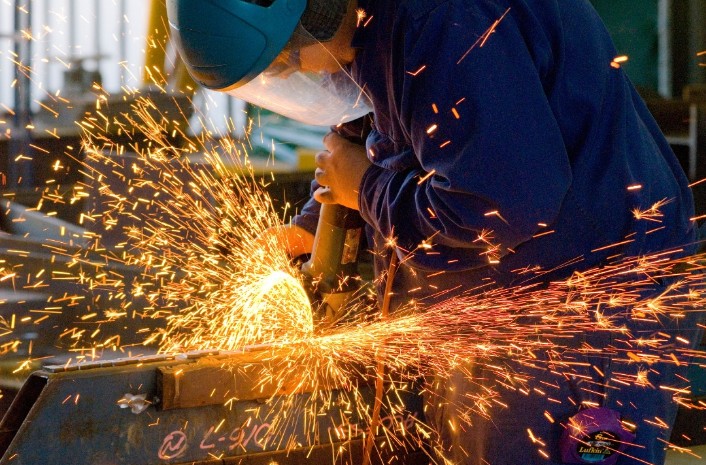Steel and iron might be two of the most common metal materials in the world. When it comes to the different types of metal, these two are some of the most common. While these metals may be side by side in the periodic table, they are two very different metals.
If you are trying to fabricate any metal pieces for your business, knowing the difference between iron and steel is critical to ensure you use the correct metal.
Keep reading to learn what is the difference between iron and steel in this informative guide.
Contents
Chemical Composition
Iron is a naturally occurring metal element with the symbol Fe and atomic number 26. It is a metal in the first transition series, characterized by its lustrous, silvery appearance. In its pure form, iron is soft and ductile but rarely found as such in nature due to its high reactivity.
Cast steel, on the other hand, is an alloy primarily composed of iron, with a carbon content of up to 2% by weight. The presence of carbon alters the characteristics of steel, making it stronger and harder than pure iron. It may also contain other elements such as manganese and nickel to enhance specific properties.
Physical Characteristics
Iron, in its pure form, possesses a high melting point and exhibits malleability. However, due to its inherent softness, it may not be suitable for various applications that demand strength and durability.
This is where steel, a versatile alloy made primarily of iron and carbon, comes into play. The properties of iron are improved by steel, which is carefully designed to be stronger, tougher, and less likely to rust.
Steel is very strong and lasts a long time. Its strength comes from the carbon it contains and other elements that can be added. Unlike iron, it is not as easy to shape.
However, its high hardness makes it perfect for demanding tasks like building skyscrapers or making high-quality cast steel valves. Steel is used in many fields, from construction to engineering, because it is reliable and can be used in many ways.
Applications of Iron
Despite its limitations, iron finds usage in numerous applications. One prominent example is cast iron, an iron-carbon alloy with a high carbon content.
Large amounts of cast iron are used in many industries because it is easy to shape and keeps heat in. It is often used to make engine blocks, pipes, and cookware, which means it is a flexible material that can be used for many things.
Versatility of Steel
Steel, due to its strength and durability, is a preferred material in construction. It is used in building skyscrapers, bridges, railways, and many more structures.
In addition, it is used to manufacture automobiles, appliances, and surgical tools. This shop for cast steel valves on the web is an excellent place to source quality steel products.
Knowing What Is the Difference Between Iron and Steel
While iron vs steel may seem similar, they have distinct differences in terms of composition, strength, and properties. It is important to understand these distinctions in order to make informed decisions when it comes to choosing the right material for a project.
With this quick guide, you now know what is the difference between iron and steel, and you are now equipped to make those decisions. Start using this knowledge today for your next metal vs alloy project!
Did you like this article? Browse through our site to find more like it.

